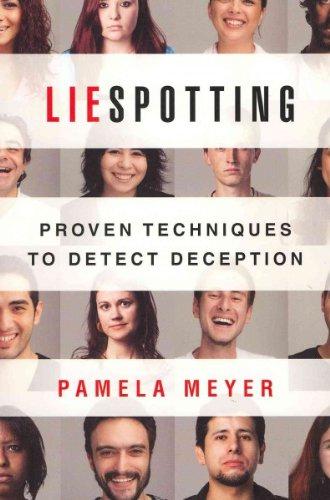
The Nose Knows
"Soon, Your Friend's Smartphone App Can Tell When You're Lying"
***
The Language of Lying: Animated Primer on How to Detect Deception
by Maria Popova
The four most reliable telltale signs of the 10 to 200 lies we tell and are told each day.
 Our yearning to discern deception so that we can protect ourselves from abuse, is ancient and almost primal — a marketable commodity for mystics and media manipulators alike. In one of the best explorations of the subject, Sam Harris defined lying as “both a failure of understanding and an unwillingness to be understood.” Susan Sontag wrote in her diary that “ordinary language is an accretion of lies.” But language itself, it turns out, is a remarkable lie-detector — the closest we can get to peering into another’s mind to understand motive and recognize deception.
Our yearning to discern deception so that we can protect ourselves from abuse, is ancient and almost primal — a marketable commodity for mystics and media manipulators alike. In one of the best explorations of the subject, Sam Harris defined lying as “both a failure of understanding and an unwillingness to be understood.” Susan Sontag wrote in her diary that “ordinary language is an accretion of lies.” But language itself, it turns out, is a remarkable lie-detector — the closest we can get to peering into another’s mind to understand motive and recognize deception.
From Noah Zandan and TED Ed comes this revelatory short animation on how to spot a liar, using communications science and linguistic text analysis to explore the four most common patterns in the subconscious language of deception.
- Liars reference themselves less when making deceptive statements. They write or talk more about others, often using the third person to distance and disassociate themselves from their life.
- Liars tend to be more negative because, on a subconscious level, they feel guilty about lying.
- Liars typically explain events in simple terms, since our brains struggle to build a complex lie. Judgment and evaluation are complex things for our brains to compute.
- Even though liars keep descriptions simple, they tend to use longer and more convoluted sentence structure, inserting unnecessary words and irrelevant but factual-sounding details in order to pad the lie.
Much of Zandan’s narrative calls to mind the work of Pamela Meyer, author ofLiespotting: Proven Techniques to Detect Deception (public library), which examines truth-telling and its opposite through the trifecta of facial expression decoding, interrogation training, and behavioral psychology research. In her own 2011 TED talk, Meyer dives deeper into the tell-tale signs of lying:
On a given day, studies show that you may be lied to anywhere from 10 to 200 times.[...]Lying is complex. It’s woven into the fabric of our daily and our business lives. We’re deeply ambivalent about the truth. We parse it out on an as-needed basis, sometimes for very good reasons, other times just because we don’t understand the gaps in our lives… We’re against lying, but we’re covertly for it in ways that our society has sanctioned for centuries and centuries and centuries. It’s as old as breathing. It’s part of our culture, it’s part of our history. Think Dante, Shakespeare, the Bible, News of the World.[...]When you combine the science of recognizing deception with the art of looking, listening, you exempt yourself from collaborating in a lie. You start up that path of being just a little bit more explicit, because you signal to everyone around you, you say, “Hey, my world, our world, it’s going to be an honest one. My world is going to be one where truth is strengthened and falsehood is recognized and marginalized.” And when you do that, the ground around you starts to shift just a little bit.
In Liespotting, Meyer goes on to explore the evolutionary value of lying, the single most telling facial expression during deception, and the five-step method that most reliably flags lies in interviews, dates, negotiations, and various other interpersonal exchanges. Couple it with Sam Harris on lying then, for a complementary counterpoint, see David DeSteno’s remarkable work on the psychology of trust.
No comments:
Post a Comment